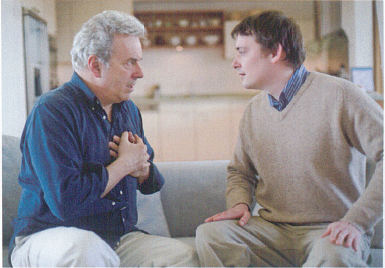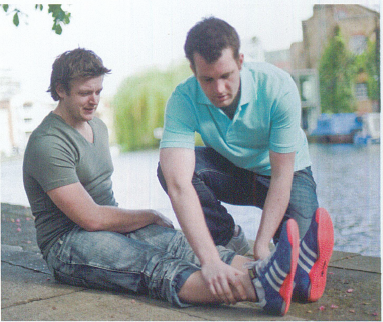SECONDARY SURVEY
Once you have completed the primary survey and dealt with any life-threatening conditions, start the SECONDARY SURVEY for the methodical process of checking for other injuries or illnesses by performing a head-to-toe examination.
This is called the secondary survey. Question the casualty and the people around him. Make
a note of your findings if you can, and pass all the details to the emergency services or hospital, or whoever takes responsibility for the casualty.
Ideally, the casualty should remain in the position found, at least until you are satisfied that it is safe to move him into a more comfortable position appropriate for his injury or illness.
This survey includes two further checks beyond the ABC.
- Disability is the casualty’s level of response.
- Examine the casualty. You may need to remove or cut away clothing to examine and/or treat the injuries. By conducting this survey you are aiming to discover the following.
- History What happened leading up to the injury or sudden illness and any relevant medical history.
- Symptoms Information that the casualty gives you about his condition.
- Signs you find on examination of the casualty.
HISTORY
There are two important aspects to the history: what happened and any previous medical history.
EVENT HISTORY
The first consideration is to find out what happened. Your initial questions should help you to discover the immediate events leading up to the incident.
The casualty can usually tell you this, but sometimes you have to rely on information from people nearby so it is important to verify that they are telling you facts and not just their opinions.
There may also be clues, such as the impact on a vehicle, which can indicate the likely nature of the casualty’s injury. This is often referred to as the mechanism of injury.
PREVIOUS MEDICAL HISTORY
The second aspect to consider is a person’s medical history. While this may have nothing to do with the present condition, it could be a clue to the cause. Clues to the existence of such a condition may include a medical bracelet or medication in the casualty’s possessions.
TAKING A HISTORY
•Ask what happened; for example, establish whether the incident is due to illness or an accident.
•Ask about medication the casualty is taking currently.
•Ask about medical history. Find out if there are ongoing and previous conditions.
•Find out if a person has any allergies.
•Check when the person last had something to eat or drink.
•Note the presence of a medical warning bracelet – this may indicate an ongoing medical condition. such as epilepsy, diabetes, or anaphylaxis.
LISTEN TO THE CASUALTY

Make eye contact with the casualty as you talk to him. Keep your questions simple, and listen carefully to the symptoms he describes.
SYMPTOMS
These are the sensations that the casualty feels and describes to you. When you talk to the casualty, ask him to give you as much detail as possible. For example, if he complains of pain, ask where it is.
Ask him to describe the pain (is it constant or intermittent, sharp, or dull). Ask him what makes the pain better (or worse), whether It is affected by movement or breathing, and if it did not result from an injury, where and how it began.
The casualty may describe other symptoms, too, such as nausea, giddiness, heat, cold, or thirst. Listen very carefully to his answers and do not interrupt him while he is speaking.
SIGNS

These are features such as swelling, bleeding, discoloration, deformity and smells that you can detect by observing and feeling the casualty. Use all of your senses – look, listen, feel, and smell.
Always compare the injured and uninjured sides of the body. You may also notice that the person is unable to perform normal functions, such as moving his limbs or standing.
Make a note of any obvious superficial injuries, going back to treat them only when you have completed your exam nation.
COMPARE BOTH SIDES OF THE BODY
Always compare the injured part Of the body with the uninjured side. Check for swelling, deformity, and/or discoloration.